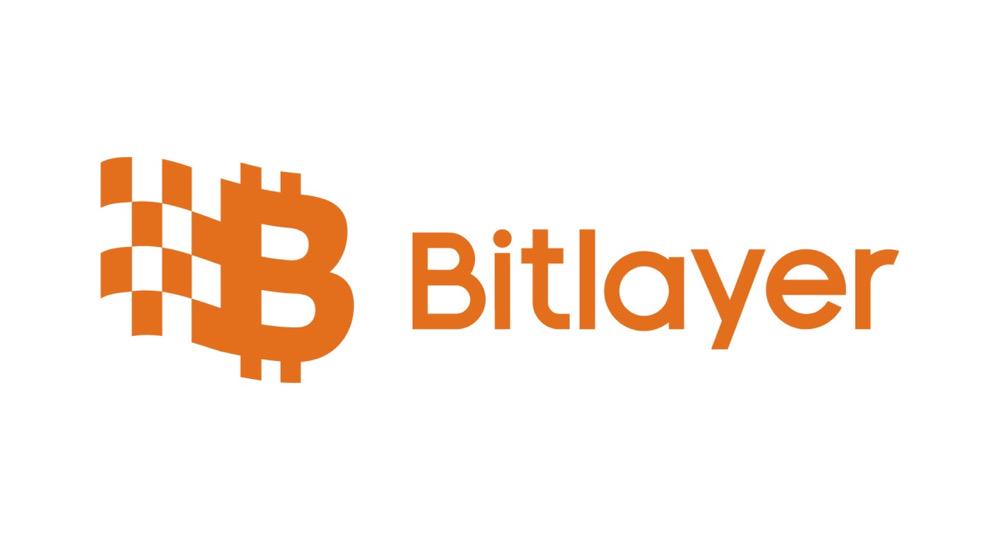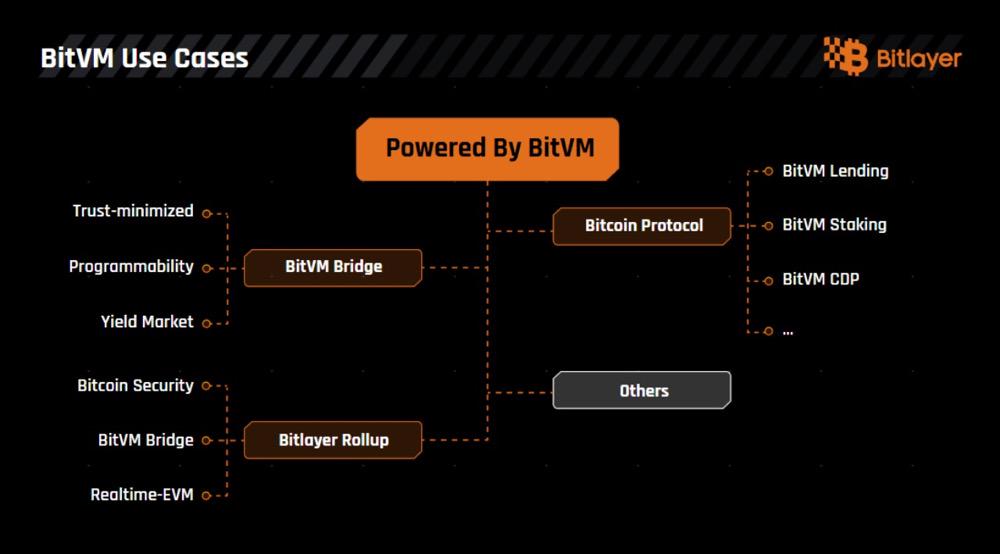
Recently, the cryptocurrency market has shown a narrow range of fluctuations, with BTC prices continuing to oscillate between $70,000 and $90,000. In the absence of significant positive catalysts, the community has shifted its focus to some leading projects that have not yet reached TGE. After more than a year of ecological construction, the TGE timelines for some leading Bitcoin ecological protocol projects are approaching their critical points.
Recently, in response to community concerns regarding project TGE, high on-chain GAS fees, weak official asset helmet empowerment, and the ecological wealth creation effect, Bitlayer co-founder Kevin He provided concentrated responses and disclosed key updates on BitVM's technological progress and future plans.
Additionally, to better collect community feedback, the Bitlayer team has initiated a community development proposal collection. Participants can provide valid suggestions by filling out the survey (specific link: https://bit.ly/bitlayercomm), and users who offer effective suggestions will have the chance to receive rewards.
The following is a summary of Kevin's responses to recent hot topics in the Bitlayer community:
About TGE and Community Incentives
Question 1: Bitlayer completed its seed round financing in March 2024, followed by a successful completion of Series A and A+ rounds totaling $25 million. The team has also early on airdropped BTR as rewards to community users during operational activities. Does the team have a clear timeline for the project's TGE? What stage are we currently in?
Kevin: We are indeed in the final stage before TGE. The TGE phase will involve systematic work across multiple dimensions, including finalizing the token economic model, adapting to a global compliance framework, and communicating with exchanges and market makers. However, due to confidentiality agreements with partners, we cannot disclose a specific timeline at this stage.
What can be confirmed is that we have made positive progress in all areas. Once we complete all necessary processes and receive final confirmation, we will promptly share updates through official announcements and community channels. Please stay tuned for good news.
Question 2: When does the team plan to announce the token economic model? How will the token distribution ratio be set? What is the utility of the BTR token?
Kevin: The design of the token economic system is a key pillar of the project's long-term ecological value. The team has always advanced this work with rigor and sustainability as core principles. Currently, the details regarding token distribution ratios, release rules, and utility scenarios are in the final verification stage.
We understand the community's expectations for TGE, but we cannot disclose specific details at this time. We promise to fully announce the token economic model through official channels at an appropriate stage before TGE and will allow ample time for the community to interpret the rules. Updated information can be found in official articles later.
Question 3: Are there lock-up rules for the BTR rewards obtained by users through activities like the Head Mining Festival and BTCFI Carnival? How will the team prevent large-scale market sell-offs after the token goes live?
Kevin: The lock-up rules for BTR rewards from the aforementioned activities are related to specific events. For example, the airdrop in the third Head Mining Festival and the racing card activity in the user center correspond to non-lock-up BTR rewards. More details can be confirmed by checking the relevant activity announcements.
Overall, we strictly adhere to the principles of contribution and long-term value binding in the design of airdrop rewards. The entire reward distribution process will set differentiated release cycles based on on-chain behavior and ecological participation. Specific rules and details will be fully disclosed through official announcements before TGE, and the community will be open for Q&A.
Question 4: The Lucky Helmet is Bitlayer's first officially issued NFT. Will there be other empowerment initiatives in the future?
Kevin: The helmet is Bitlayer's first official NFT, and its holders are the first batch of Bitlayer users. Prior to this, we provided point bonuses and other empowerments to helmet holders during the Head Mining Festival and conducted exclusive BTR token airdrops. The team has no reason to abandon helmet empowerment, and we promise to conduct more empowerment in various activities in the future. If holders have better suggestions, they can contact the Bitlayer team for feedback.
About Ecological Development and Operational Strategy
Question 5: Some Bitlayer ecological projects have paused operations. Does Bitlayer not have a review mechanism when cooperating with ecological projects? Additionally, the entire Bitlayer ecosystem currently lacks wealth creation effects and high attention. How do you view this issue?
Kevin: As the operator of a public chain, Bitlayer welcomes more project parties to build and actively provides various infrastructure support. However, the entire chain's ecological construction is still in its early stages, and the maturity of the ecosystem requires a long process of technical validation, developer accumulation, and market recognition iteration. During this time, many projects of varying quality will inevitably emerge, but we must also recognize that many innovative products have appeared in the ecosystem.
Regarding the lack of wealth creation effects, I understand this is an industry-wide issue, not just a Bitlayer problem. We believe that as BTCFi and the entire chain continue to develop, ecological projects will surely enter a prosperous phase.
Question 6: Bitlayer collaborated with many ecological projects during the Head Mining Festival, but the rewards ultimately redeemed are not enough to cover the interaction GAS fees.
Kevin: Over the past year, Bitlayer has actively engaged with ecological projects and attracted user participation through points and token incentives. As for the issue of the rewards redeemed by projects, one important reason is the current general market conditions, where price performance may not meet everyone's expectations. We believe that as the market improves, overall performance will change.
Regarding the community feedback on the difficulty of redeeming ecological project airdrop rewards, the team is currently developing the Quick Jump solution based on the demands of partners and users. The development team is working hard to help users transfer airdrop rewards obtained from participating in Bitlayer ecological projects across chains at almost zero cost. This feature is expected to be implemented in two weeks. Additionally, we are actively promoting solutions to address the overall chain's GAS interaction cost issue and believe a satisfactory answer will be provided soon.
Question 7: The Bitlayer ecosystem is not very prosperous at the moment. What gameplay can users expect when transferring BTC across chains into the Bitlayer ecosystem?
Kevin: First of all, the high prosperity of the ecosystem is indeed a process. At the same time, considering users' actual needs, we have launched the BTCFi Yield entry (https://www.bitlayer.org/btcfi), where we will integrate currently high-yield DeFi products for user experience. Currently, the market demand for products with relatively high APR is still very high. For example, the first phase of BTC Yield with a quota of 600 BTC for BLBTC was fully subscribed in just 47 hours. Furthermore, based on these BTCFi products, we also hope to work with partners to address various asset management needs for BTC, allowing the commercial environment on the chain to be truly realized.
About Technology and User Experience
Question 8: Users generally report that on-chain GAS fees are high. When can we expect significant optimization?
Kevin: With the recent advancement of the BitVM bridge's mainnet and the upcoming iteration of the V2 mainnet, the team will soon provide a satisfactory answer to enhance user experience.
Question 9: What roles do Layer 2 and BitVM Bridge occupy in Bitlayer's planning, and what will be the future business focus?
Kevin: Layer 2 and BitVM Bridge are two important and parallel business modules of Bitlayer, working together through technical coupling and scenario collaboration. Layer 2 serves as the foundation of Bitlayer, and we will enhance user and developer experience through V2 upgrades, reducing GAS fees, and continuous ecological support.
Additionally, as a member of the BitVM Alliance, Bitlayer has made significant contributions to the implementation of BitVM. The core of the BitVM Bridge is to achieve the so-called "1-of-N" trust model—whereas as long as one participant among multiple remains honest, the entire system can function normally. This is fundamentally different from models that require "the majority to be honest." Of course, the planning for the BitVM Bridge goes beyond just asset cross-chain transfer functionality; its goal is to connect Bitcoin liquidity providers (including large holders, retail investors, and institutions) with asset management protocol needs. In the future, the team also plans to open-source this technology and package it as an API service. For more information on the implementation and application scenarios of BitVM, you can refer to this video explanation: https://youtu.be/XzyYI6Kohd4?si=GHunGP6yOVZ7n8oZ.
Whether it is building an ecosystem with Layer 2 or bridge business, these are the ongoing efforts of Bitlayer: developing the infrastructure for the BTCFi ecosystem.
Question 10: Bitlayer is a project based on the BitVM paradigm. How do you balance usability and decentralization?
Kevin: To answer this question, I believe the essence must return to the real needs of token holders.
From compliance-focused institutional holders and large holders (such as national reserves/BTC ETF issuers/publicly listed companies/family offices, etc.) to retail users pursuing efficient interactions, the diversity of their specific needs determines that we need to provide differentiated solutions for them. For institutions and high-net-worth holders, asset sovereignty control and compliance transparency are their primary needs. We hope to address counterparty risks and ensure verifiability through the trust-minimized BitVM Bridge solution. For ordinary users, many enter this field not necessarily to pursue the ideal of decentralized technology but to conveniently use on-chain services or products. Therefore, we need to develop with a pragmatic attitude while also focusing on business expansion and market adaptability beyond technology.

About the Roadmap and Strategic Planning
Question 11: What are the core goals of Bitlayer's technology roadmap for 2025?
Kevin: From the project's inception to now, focusing on the market and solving industry pain points has always been our guiding star. After more than a year of technological accumulation, we are gradually starting to implement our R&D results. What can be expected next are the following technological advancements and implementations: First, the BitVM Bridge is currently in the testnet phase, and we will soon welcome the mainnet launch; second, the V2 launch is underway, and we are currently refining related features. Additionally, we are conducting a series of R&D efforts to enhance user experience, such as reducing GAS fees and supporting high-frequency trading functions. All of these are part of our clear goals and plans. Bitlayer's ultimate goal is to build a business closed loop that realizes value creation and value release, operating profitable businesses and becoming a company that transcends cycles.
Question 12: What differentiated strategies will the team adopt in global operations? How will you expand ecological influence?
Kevin: Since the establishment of Bitlayer, the team has adhered to an operational strategy that is rooted in Asia and aimed at the global market. The Asian market is our foundation, and we have built strong local communities in several Asian countries. At the same time, we are actively expanding into markets in North America, the Middle East, and Europe. Through our efforts, Bitlayer's development achievements and potential have gained significant recognition from institutions in North America, and more collaborations are in progress.
When it comes to the ecosystem, we must clearly recognize that building a blockchain ecosystem takes time and requires the joint efforts of the official team, developers, and the community. We firmly acknowledge the direction of Bitcoin DeFi and are investing in two core technologies (BitVM + high-frequency chain) to create two products (BitVM Bridge and Layer 2) that meet the asset management needs of various Bitcoin holders. As infrastructure gradually improves and external conditions become favorable, we believe that a prosperous Bitcoin DeFi will undoubtedly emerge within the Bitlayer ecosystem.
免责声明:本文章仅代表作者个人观点,不代表本平台的立场和观点。本文章仅供信息分享,不构成对任何人的任何投资建议。用户与作者之间的任何争议,与本平台无关。如网页中刊载的文章或图片涉及侵权,请提供相关的权利证明和身份证明发送邮件到support@aicoin.com,本平台相关工作人员将会进行核查。




